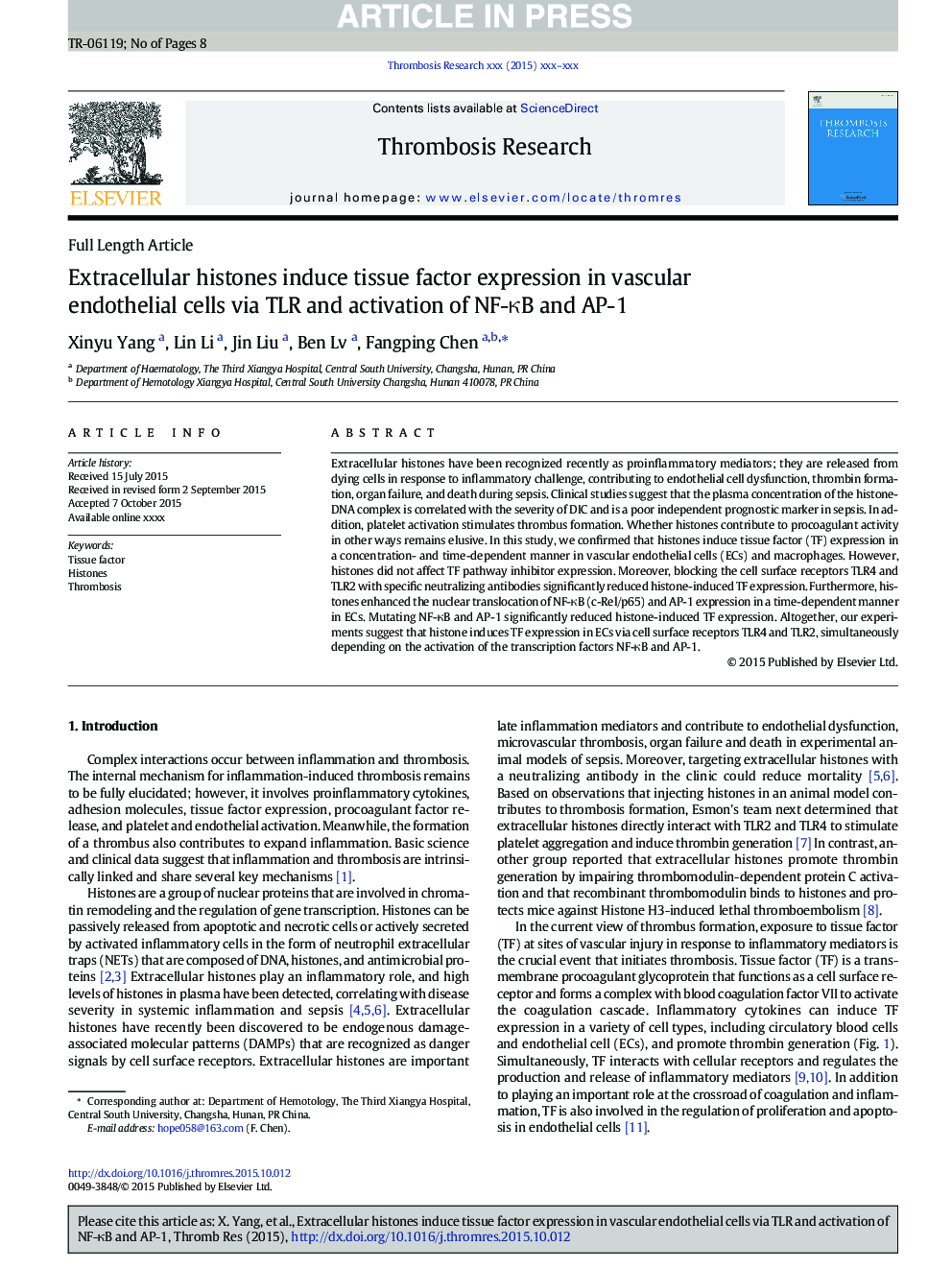| Article ID | Journal | Published Year | Pages | File Type |
|---|---|---|---|---|
| 6000967 | Thrombosis Research | 2016 | 8 Pages |
Abstract
Extracellular histones have been recognized recently as proinflammatory mediators; they are released from dying cells in response to inflammatory challenge, contributing to endothelial cell dysfunction, thrombin formation, organ failure, and death during sepsis. Clinical studies suggest that the plasma concentration of the histone-DNA complex is correlated with the severity of DIC and is a poor independent prognostic marker in sepsis. In addition, platelet activation stimulates thrombus formation. Whether histones contribute to procoagulant activity in other ways remains elusive. In this study, we confirmed that histones induce tissue factor (TF) expression in a concentration- and time-dependent manner in vascular endothelial cells (ECs) and macrophages. However, histones did not affect TF pathway inhibitor expression. Moreover, blocking the cell surface receptors TLR4 and TLR2 with specific neutralizing antibodies significantly reduced histone-induced TF expression. Furthermore, histones enhanced the nuclear translocation of NF-κB (c-Rel/p65) and AP-1 expression in a time-dependent manner in ECs. Mutating NF-κB and AP-1 significantly reduced histone-induced TF expression. Altogether, our experiments suggest that histone induces TF expression in ECs via cell surface receptors TLR4 and TLR2, simultaneously depending on the activation of the transcription factors NF-κB and AP-1.
Keywords
Related Topics
Health Sciences
Medicine and Dentistry
Cardiology and Cardiovascular Medicine
Authors
Xinyu Yang, Lin Li, Jin Liu, Ben Lv, Fangping Chen,
